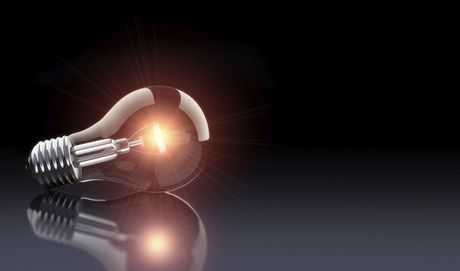A comeback for incandescent bulbs?

The end is not over for traditional incandescent light bulbs, thought to be well on their way to oblivion, thanks to a technological breakthrough by researchers from MIT and Purdue University.
Incandescent lighting and its warm, familiar glow has long been the household choice for lighting, but that is changing fast as regulations aimed at improving energy efficiency are phasing out the old bulbs in favour of more efficient CFLs and LEDs.
Incandescent bulbs work by heating a thin tungsten wire to temperatures of around 2700°C, but these bulbs have always suffered from the fact that more than 95% of the energy that goes into them is wasted, most of it as heat.
However, researchers at MIT and Purdue University* may have found a way to change all that with what they call “light recycling”, an approach that uses a two-stage process that creates a structure, a form of photonic crystal made of Earth-abundant elements, which essentially makes a dramatic difference in how efficiently light is converted into electricity.
The researcher’s new technological material takes in the unwanted, useless wavelengths of energy and converts them into the visible light wavelengths that are desired, recycling energy that would otherwise be wasted.
The efficiency of conventional incandescent lights is currently between 2 and 3%, fluorescents (including CFLs) between 7 and 13%, and LEDs between 5 and 13%.
According to the team, the new two-stage incandescent could reach efficiencies as high as 40%.
The first proof-of-concept units achieve about 6.6% efficiency, but the team say even that preliminary result matches the efficiency of some of today’s CFLs and LEDs.
MIT physics professor Marin Soljačić said: “The ability to control thermal emissions is very important. That’s the real contribution of this work.”
The technology may also have potential for other applications besides light bulbs, but he said the research is still too early to speculate.
*The new findings are reported in the journal Nature Nanotechnology by MIT physics professors, Marin Soljačić, John Joannopoulos and Francis Wright Davis; power engineering professors Gang Chen and Carl Richard Soderberg; MIT research scientist Ivan Celanovic; postdoc Ognjen Ilic; and Purdue physics professor (and MIT alumnus) Peter Bermel.
The work was supported by the Army Research Office through the MIT Institute for Soldier Nanotechnologies and the S3TEC Energy Frontier Research Center funded by the US Department of Energy.
Aust solar farms to deploy Canadian anti-hail tech
Australian energy retailer Flow Power is teaming up with Canadian Solar to deploy the...
Praise for Senate committee report into electrification
Rewiring Australia has welcomed a report into residential electrification carried out by a...
Endeavour Energy launches new community battery program
76 new batteries will be delivered across the Illawarra, South Coast, Greater Western Sydney,...




